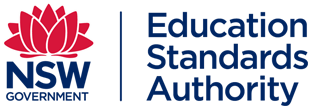NESA case study - Henry
This case study illustrates adjustments for a student with disability studying PDHPE Stage 5.
Henry is in Year 9 and has a diagnosis of language development delay. He has moderate receptive and mild expressive communication delay. Henry is a keen sportsman and enjoys PDHPE, particularly participating in physical activities. He would like to continue studying PDHPE in Stage 6.
PDHPE - Stage 5
Henry’s PDHPE teacher is programming a unit of work on health information and the influence of the media on the health, safety, wellbeing and physical activity levels of young people.
The unit focuses on how students can empower others to lead safe, healthy and active lifestyles and the external factors that influence these decisions.
Collaborative curriculum planning for Henry
Henry’s speech and language were delayed from an early age and he benefitted from intensive speech therapy in primary school to improve both areas. As a result, Henry’s verbal expressive language skills have improved. He is able to verbally communicate and articulate most of his ideas clearly and effectively, however he has difficulty explaining his thoughts in written form and composing sustained written responses.
Henry is experiencing difficulty in the following areas in the classroom:
- interpreting lengthy oral and print texts
- interpreting meaning from assessment task notifications
- understanding subject-specific vocabulary
- following multiple instructions
- understanding new concepts.
Due to a history of speech and language difficulties, Henry’s literacy skills are below age expectations. His reading comprehension has been assessed at 9 years and his spelling at 10 years.
At times, Henry appears disengaged with his work. His difficulties in understanding class content and expressing himself in written form sometimes lead to frustration and off task behaviour. Henry relates well to his peers and cooperates well in group settings, when he understands his role within the group.
Adjustments for Henry
Through the collaborative curriculum planning process, the special education teacher discusses Henry’s learning goals and priorities with his parents. They identify that Henry requires supplementary adjustments in all his subjects. In particular, he requires visual supports to consolidate his understanding of concepts and instructions.
Henry would benefit from the following adjustments:
- explicit teaching of subject-specific vocabulary using visual aids such as photographs, pictures or symbols
- alternative and/or simplified texts that align with his current reading capability
- oral contributions to class discussions
- checklists and/or scaffolds that support his self-organisational skills
- graphic organisers and/or scaffolds for note taking.
Using the information and decisions from the collaborative curriculum planning process, Henry’s PDHPE teacher considers appropriate adjustments for Henry for the unit of work. The teacher describes ways that Henry can demonstrate evidence of learning throughout the unit.
This resource has been provided by NSW Education Standards Authority (NESA) who work with the NSW community to drive improvements in student achievement. You can find further information, news and updates on the NESA website.
© 2021 NSW Education Standards Authority for and on behalf of the Crown in right of the State of New South Wales.
